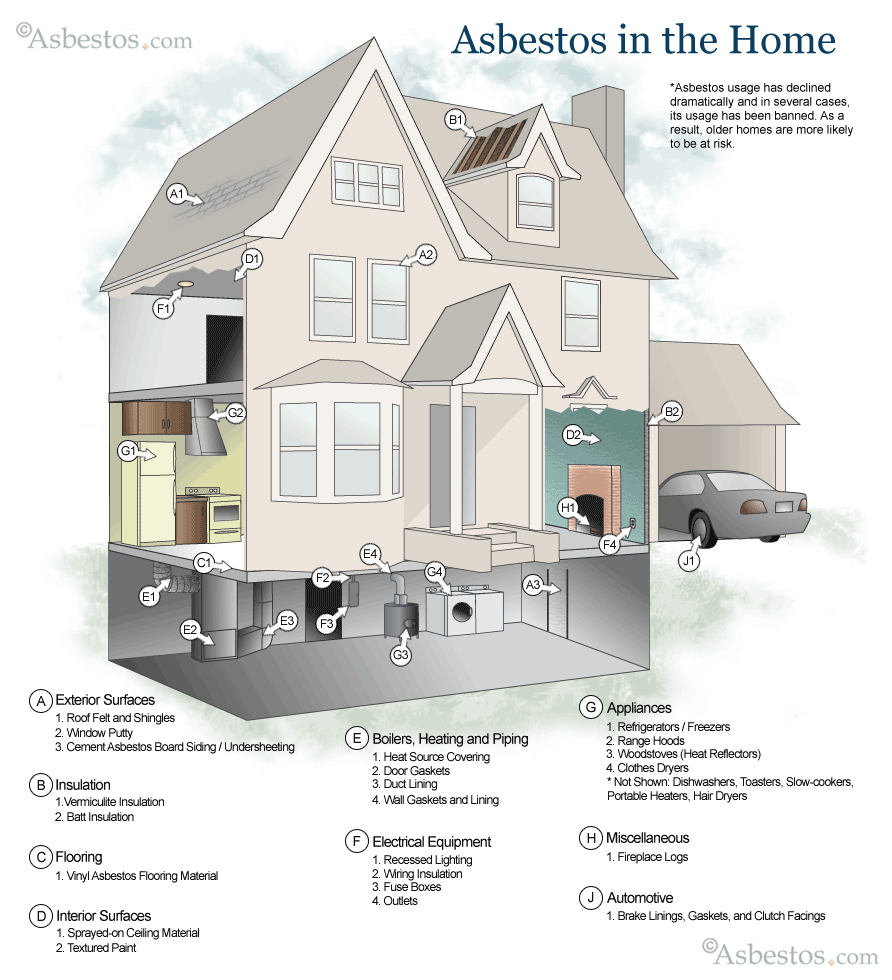
When embarking on the path to purchasing a home, there are many things to consider. Living in the 21st century, there is an importance being placed on green, sustainable methods of building, which promote better energy efficiency, cleaner air and stronger homes.
Many homes built prior to 1980 may still contain asbestos and other obsolete building materials. Having the assistance from a reliable Home Inspector can make the home buying process simple and stress free.
While many homeowners may think that building green can take a toll on the wallet, the benefits outweigh any initial monetary losses. Building or remodeling your homes with eco-friendly materials can lower utility and water bills, achieve federal tax credits, higher real estate value, purer air quality, reduced waste sent to landfills and conservation of natural resources.
Asbestos Tips
Asbestos is a fibrous mineral that was used in construction applications for the greater part of the 20th century. Often appearing as insulation, piping, roofing and flooring, homes and buildings could still contain asbestos materials if they were built prior to 1980.
If you locate any suspected asbestos in the home, most experts suggest leaving it un-disturbed until a home inspector can examine your property, take evaluations and determine the safest course of action. Sometimes the best action is no action at all. Disturbing asbestos in good condition may cause its fibers to be released into the air.
Long term exposure to damaged airborne asbestos fibers can lead to the development of a severe lung ailment known as malignant mesothelioma. Due to latency periods that can last 20 to 50 years, mesothelioma diagnosis is truly a difficult task for physicians.
The Health Canada Organization offers assistance and information in the prevention, disposal and removal of asbestos. They are federally responsible for helping citizens maintain and improve health at home and the work place. The inspection and removal of toxic substances must be performed by licensed abatement contractors who are trained in handling dangerous materials. They work under state and federal regulations to ensure no health concerns arise from improper removal.
GO GREEN
A catalyst for homes, industries, schools, universities and business, the incredible diversity of enterprises is driven by a common bound to move to a green lifestyle. Green alternatives to asbestos include the use of cotton fiber, lcynene foam and cellulose. Cotton fiber is quickly becoming a favorite for home builders and renovators.
Made from recycled batted material, it is also treated to be fireproof. Research has demonstrated that the use of eco-friendly insulation alternatives can reduce annual energy costs by 25 percent. Rather than expensive and mal-treated wood, interior walls can be made from steel and concrete, avoiding many of the problems associated with asbestos and other insulation methods.
Living in a world where environmental sustainability is a vital concern to the future of mankind, it is important to take note of the consequences of improper building materials and environmental degradation. As citizens of Earth, we are obligated to nurture and sustain this planet. Many locations throughout Canada are swiftly changing their construction practices to suit the environment and the health of human beings.




No comments:
Post a Comment